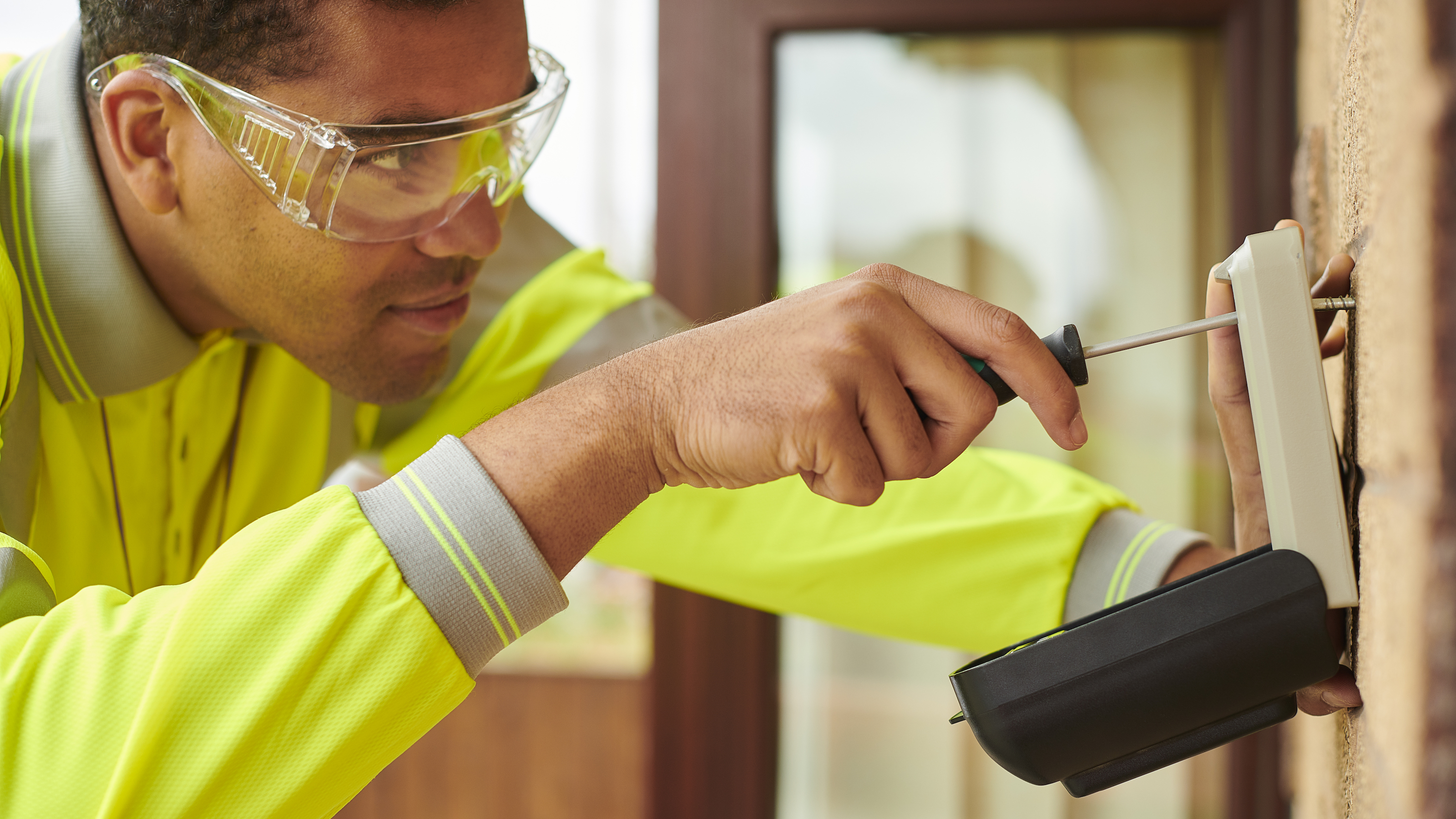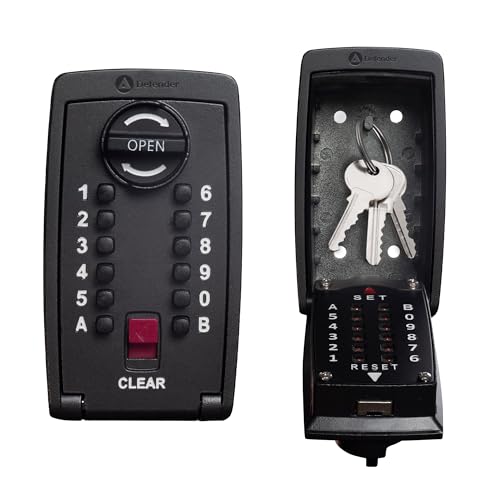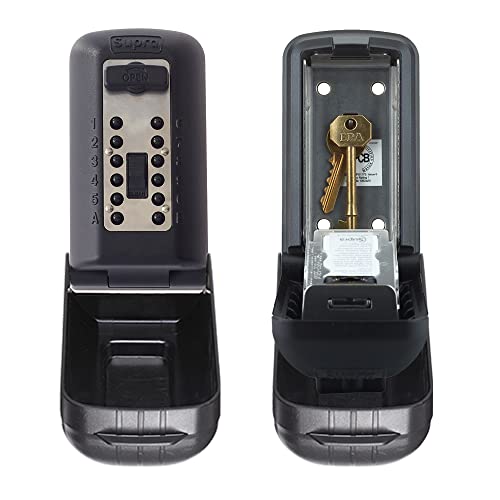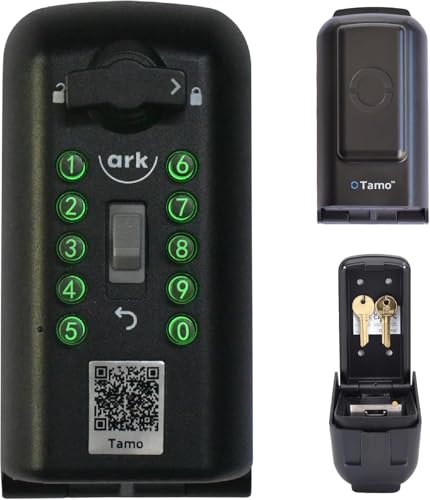Do you use a key safe? Why adding one that’s visible is a bad idea
If you or a relative need a key safe, make sure it doesn’t become a target for burglars

A key safe can be useful in order to make access to a home for trusted visitors like family members or carers convenient. The mounted box provides a place to secure door keys outside with a combination lock providing access to those who hold the code.
But a closed key safe in plain sight can be a target for burglars, police have warned. Breaking in to the safe can provide them with the key to the door, compromising a home security system and possibly causing home insurance problems.
So, if you, or a loved one, want to use a key safe, it’s vital to know where to put it for maximum security and what to look for when you’re buying, and all the information you require is below.
What is a key safe?
A key safe is a strong mechanical box for secure storage of door keys. It’s designed to be mounted to brick or concrete outside your home and typically has a hinged front opened via its combination lock.
Depending on the design of the key safe, the combination lock might be a four wheel version, or a push button design.
A key safe is usually mounted with strong screws that go through the back of the box and secure it to the house wall.
Why might a burglar target a key safe?
A key safe can be a convenient way to provide trusted visitors with access to your home or that of a loved one. It means you don’t have to give out multiple keys to those who might need them regularly or as a one-off.
Bring your dream home to life with expert advice, how to guides and design inspiration. Sign up for our newsletter and get two free tickets to a Homebuilding & Renovating Show near you.
However, Nottinghamshire Police has drawn attention to a series of burglaries carried out by an individual who, the force says, appeared to deliberately target homes with key safes seemingly aware they were likely be the homes of elderly or vulnerable people living alone.
The force advises that key safes fixed on walls next to the front door are more likely to be targeted.
Where to put a key safe
While a key safe on the wall next to the front door can create an obvious target for intruders, there are places you can put one.
“Position it in a discreet location away from the door, ideally somewhere concealed from street view,” says Anthony Neary, security expert at Safe.co.uk. “For maximum security, bolt it to a solid wall or masonry surface rather than timber cladding or fences. A good quality, correctly installed key safe will offer convenience without compromising security.”
Nottinghamshire Police advises that the combination of the key safe should be changed regularly. The force also suggests that when a key safe isn’t being used, it should be left open. This way, even if an opportunist burglar spots it, they’ll know there’s nothing inside.

Anthony Neary is the founder and security expert at home and business security retailers Safe.co.uk. With over 15 years of industry experience, he specialises in security solutions and how to keep properties safe.
Home insurance and key safes
As well as knowing how to position a key safe for maximum security, you should also be aware of the implications of having one when it comes to insurance.
“Always inform your insurer when you’ve installed a key safe, as some providers may have specific requirements or exclusions for their use,” advises David Joyson, chief customer officer at Homeprotect. “For example, some may confirm that installing one will invalidate your insurance entirely, but some may require you to use specific brands or models.
“Some insurers may also require the key safe to be installed professionally or located in a discreet area and that the code is shared with a limited number of people,” he says.
“Failing to disclose a key safe could result in a future claim being denied,” he warns.
You may need to abide by other stipulations. Changing the code every few months for security can be required by the insurance provider as well as being highly advisable, David explains.
And you also need to maintain the key safe. “Check key safes at least once per month to ensure they’re functioning properly, and that the lock mechanism is secure,” he says. “A faulty or damaged key safe may not provide the security you need, which could impact your claim in case of a burglary or emergency.”

David is chief customer officer at Homeprotect, which specialises in providing coverage for unusual properties and circumstances.
Cost of a key safe
A key safe can cost from around £20 with prices ranging up to £100 and more. However, as well as considering its price, it’s vital to focus on the security of any model you’re thinking of buying.
“Low-cost models with basic locks are easy to tamper with, and if they’re in plain sight, burglars know exactly where to look for a spare key,” says Anthony Neary. “Choose a police-approved model with a strong metal body and anti-tamper features.”
You can look out for models that meet the police preferred specification standard as part of the accreditation scheme of official police security initiative Secured by Design. You might additionally focus on key safes with a Loss Prevention Certification Board (LPBC) LPS (loss prevention standard) 1175 Issue 8 security classification. This is a standard for protection against forced entry.
Shop for a key safe
A discreetly located and secure key safe can be handy for the outside of your home. Inside, you might want extra security for valuable items, too. If that’s the case, hidden safe ideas are ideal for passports, jewellery and more.
Sarah is a freelance journalist and editor writing for websites, national newspapers, and magazines. She’s spent most of her journalistic career specialising in homes.
She loves testing the latest home appliances and products, and investigating the benefits, costs and practicalities of home improvement. She is an experienced renovator and is currently remodelling the ground floor of her new home.
She was Executive Editor of Ideal Home and has worked for Your Home and Homes & Ideas. Her work has published by numerous titles, including The Guardian, channel4.com, Houzz, Grand Designs, Homes & Gardens, House Beautiful, Homes & Antiques, Real Homes, The English Home, Period Living, Beautiful Kitchens, Good Homes and Country Homes & Interiors.



